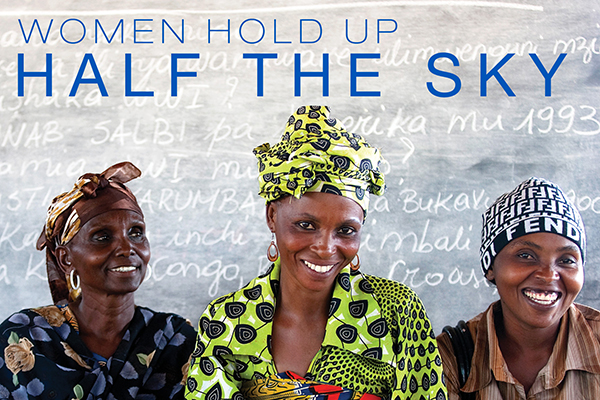Half the Sky empowers women worldwide
December 16, 2016
Women hold up half the sky. This ancient Chinese proverb may seem obvious, but the reality of our lives is that gender inequality in society makes it feel like women have a smaller, less powerful role than men do. This reality is what Half the Sky: Turning Oppression into Opportunity for Women Worldwide builds its foundation upon.
The nonfiction book, written by New York Times journalists Nicholas Kristof and Sheryl WuDunn, is a journey through countries all over the globe from the eyes of women facing oppression in a wide variety of areas.
The book itself is relatively old: released to the public in 2010, but it’s stories still hold true today. Cynically, I suspect they will continue to hold true for many years in the future. But that’s not what I love about Half the Sky. What is truly amazing about Half the Sky is Kristof and WuDunn’s startling ability to remain optimistic about the future for women around the world. Half the Sky depicts anger, sadness, frustration and terror. But then, rising from the ashes, there is hope.
This optimism about what the authors deem “the central moral challenge” of our time is what has propelled this book into the spotlight. The authors first lay out the problem: systemic women’s inequality that manifests itself in things like maternal health, trafficking and domestic violence. They do this by combining startling data analysis with equally haunting stories of injustices.
Immediately upon reading, I became attached to Half the Sky because of its incredible storytelling ability. Kristof and WuDunn document the lives of women like Edna Adan, who defied all odds to go to medical school in the U.K., only to come back and start her own maternal hospital in Somaliland, helping curb the rampant maternal mortality rate in the country and employing thousands of midwives.
The second focus of the book calls attention to practical solutions we can all contribute to that aid women everywhere. Some parts of Half the Sky do feel obsolete, such as when the authors suggest we should all just encourage women to “speak out” against a global society that simply doesn’t listen to their voices. However, relaying the notion that there are small, pragmatic things we can be doing every day to help is how Kristof and WuDunn intended to activate. I’ve followed diligently the last chapter of the book “Four Steps You Can Take in the Next Ten Minutes,” joining the CARE Action Network along with looking into sponsoring a “sister” through the international organization Women for Women.
To make Half the Sky seem less distant to our “more normal” lives, the movement’s website, halftheskymovement.org, has extensive connections for those readers looking to volunteer or donate. In addition, the authors completed a Half the Sky documentary with PBS in 2012 that converts the book’s text into a stunning visual argument. The documentary even includes celebrities such as Eva Mendes and Olivia Wilde to accompany Kristof and WuDunn as they visit some of the individual women featured in the book. In our own community, through Jan. 22, the Illinois Holocaust Museum is featuring a special Half the Sky exhibit that provides a more interactive experience than the book does.
At first glance, Half the Sky may seem like it caters less to our day-to-day lives than yet another realistic fiction novel. However, the positive energy that Kristof and WuDunn are able to spark is truly remarkable.
Half the Sky is an extraordinary book that not only pushes us all closer to issues deeply ingrained in our society, but mobilizes a certain kind of support that can only be described as revolutionary. Half the Sky is a call to arms, a case study in the complicated relationship between poverty, oppression, and culture, even an unexpected source of optimism. It’s surely a must-read for every global citizen.



